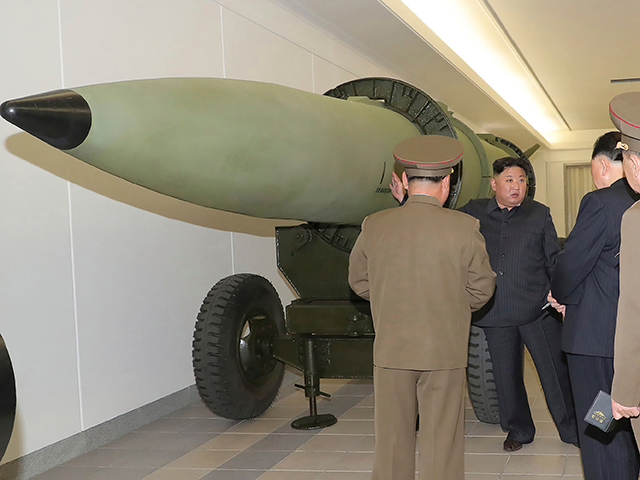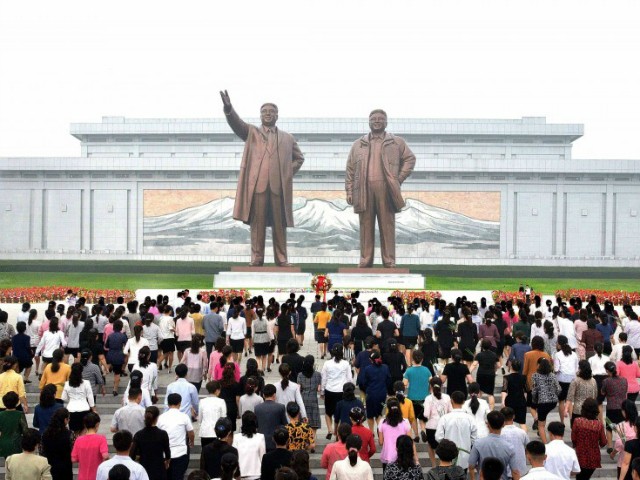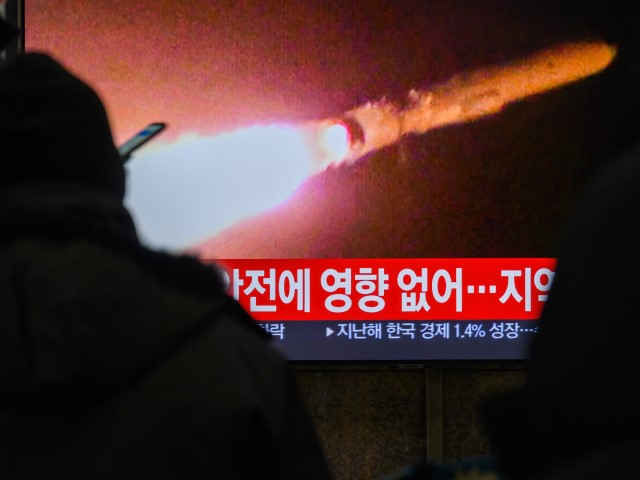North Korea’s communist dictator Kim Jong-un complained in remarks to his Politburo on Wednesday that the state of the country’s economy is “very pitiful” and that the regime’s failure to create an environment in which most citizens have access to food and other basic needs is a “serious political problem.”
Kim made the remarks at a meeting of the Workers’ Party of Korea (WPK), the only legal political party in the country. Politburo meant to discuss the implementation of economic reforms that state media referred to as the “regional development 20×10 policy.” Kim urged his leaders to consider rural development equally important to that in wealthy areas and to invest in factories and other industrial projects.
Kim has for years lamented the destitute state of his country – the result of nearly a century of totalitarian communism – and sobbed publicly on one occasion at the height of the Wuhan coronavirus pandemic.
“Our people have placed trust, as high as sky and as deep as sea, on me, but I have failed to always live up to it satisfactorily. I am really sorry for that,” Kim said in October 2020, appearing on national television crying.
Kim locked down the entire country for nearly three years, allowing citizens abroad to return home only in August 2023. The lockdowns caused a particularly dire situation for North Koreans living near the Yalu River border with China where, prior to the pandemic, the Kim regime did little to stop illegal smuggling of food and other basic goods from China for his citizens.
Despite public promises to invest more heavily into improving access to basic humanitarian aid for his citizens, no signs indicate that Kim has diverted his lavish military funding for that purpose. North Korea maintains an illegal nuclear weapons program and has, rather than consider scaling back to meet civilian needs, increased its spending on new models of missiles, espionage vessels, and nuclear-capable firearms of all kinds. Throughout January, the communist regime has claimed to debut several new weapons, including an alleged underwater “nuclear weapon system,” a spy satellite, and, most recently, an alleged strategic cruise missile.

In this photo provided on Tuesday, March 28, 2023, by the North Korean government, North Korean leader Kim Jong Un, rear, talks with military officials at a hall displayed what appeared to be various types of warheads designed to be mounted on missiles or rocket launchers on March 27, 2023, in undisclosed location, North Korea. Independent journalists were not given access to cover the event depicted in this image distributed by the North Korean government. The content of this image is as provided and cannot be independently verified. (Korean Central News Agency/Korea News Service via AP)
“The overall local economy is currently in a very pitiful state, lacking even basic conditions,” Kim told his top leaders on Wednesday, according to a translation of a Korean-language state media report by Radio Free Asia (RFA). The English-language version of his remarks published directly by the state-run Korean Central News Agency (KCNA) used the phrase “terrible situation,” instead.
“Today, failure to satisfactorily provide the people in local areas with basic living necessities including condiments, foodstuff and consumption goods has arisen as a serious political issue that our Party and government can never sidestep,” KCNA summarized Kim as saying.
Kim demanded “specific plans and correct methods with a good chance of practice” from his brightest minds, scolding them for “paying lip service” to helping regular North Koreans while taking a “passive attitude” towards the national economic situation.
To that end, the dictator introduced the “regional development 20×10 policy,” allegedly intended to bring to the countryside a “new revolution which will wipe out the centuries-old backwardness” in rural areas.
“Today we are faced with a heavy yet honorable task to provide the people with more civilized and happier living conditions and environment,” Kim said, announcing he would create a committee for the new policy intended to enforce demands to develop the most remote and destitute parts of the country.
The policy appears to be a significant change in the history of North Korea. The Kim family traditionally impoverished rural areas deliberately for the purpose of punishing people suspected of being insufficiently loyal to communism under North Korea’s songbun policy, a form of caste system in which only the families most favored by the Kims can live in Pyongyang, while the rest are relegated to remote areas or, at worst, forced into grueling labor camps for generations.
The founder of communist North Korea and Kim Jong-un’s grandfather, Kim Il-sung, “created three groups—the ‘core,’ ‘wavering,’ and ‘hostile’ classes—each of which contained a number of subcategories,” Human Rights Watch explained in 2016.
This picture taken and released from North Korea’s official Korean Central News Agency (KCNA) on September 9, 2017, shows North Korean residents offering flowers before the statues of Kim Il-Sung and Kim Jong-Il (R) on Mansu Hill in Pyongyang during celebrations of the 69th anniversary of North Korea’s national day. [THIS PICTURE WAS MADE AVAILABLE BY A THIRD PARTY. AFP CAN NOT INDEPENDENTLY VERIFY THE AUTHENTICITY, LOCATION, DATE, AND CONTENT OF THIS IMAGE. THIS PHOTO IS DISTRIBUTED EXACTLY AS RECEIVED BY AFP. / ( KNS/AFP/Getty Images)]“The people closest to Kim, their relatives, and anti-Japanese resistance fighters became North Korea’s core, or ruling, class. Peasants, laborers, and workers were lifted up from the bottom of the social order,” it continued, “their lowly position filled by those who had opposed Kim’s ascent to power or collaborated with South Korea or Japan, as Choi’s grandfather had.”
As a result, it is illegal for the rural poor to move to a city and the government invests little in their survival.
The situation in the countryside has become increasingly desperate, RFA noted on Wednesday.
“Sources inside North Korea told Radio Free Asia in May that as many as 30% of farmers in two northern provinces were unable to work on collective farms because they’re weak from hunger,” the outlet relayed.
As North Koreans go hungry, Kim continues to invest in belligerent military technology intended to intimidate America and South Korea. On Thursday, Pyongyang claimed to test a “new-type strategic cruise missile,” believed to be nuclear-capable. State media offered little information on the test, but the South Korean news organization Yonhap found that experts believed it could exacerbate the nuclear threat.
“Experts said the Pulhwasal-3-31 [the alleged new cruise missile] is seen as a nuclear-capable weapon, considering that the number in its name is identical to that of the Hwasan-31, a tactical nuclear warhead that North Korea first unveiled in March 2023,” Yonhap reported, adding that the weapon could “pose a serious threat to South Korea’s security as nuclear warheads can be mounted on such missiles.”

People are seen watching television at Seoul’s Yongsan Railway Station showing North Korea’s first test-firing of the new strategic cruise missile Pulhwasal-3-31. On January 25, North Korea announced the test-firing of a new strategic cruise missile, the “Pulhwasal-3-31,” aimed at enhancing its nuclear weapon delivery capabilities. The Missile General Bureau labeled the test as part of routine weapon system updates. Experts suggest it may be a short-range missile, indicated by its shorter length compared to previous models like the Hwasal-type cruise missiles, where “Hwasal” translates to “arrow” in Korean, and “Pulhwasal” means “fire arrow.”. (Kim Jae-Hwan/SOPA Images/LightRocket via Getty)

COMMENTS
Please let us know if you're having issues with commenting.